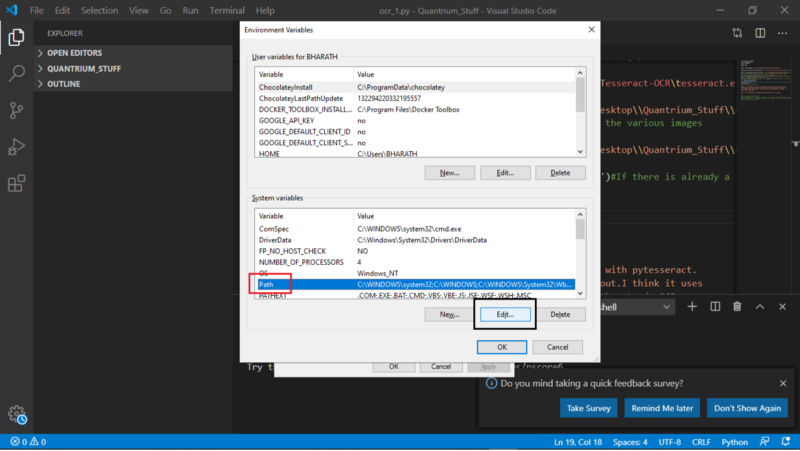
- #INSTALL TESSERACT ON WINDOWS WITH A GUI INSTALL#
- #INSTALL TESSERACT ON WINDOWS WITH A GUI FULL#
- #INSTALL TESSERACT ON WINDOWS WITH A GUI WINDOWS#
#INSTALL TESSERACT ON WINDOWS WITH A GUI INSTALL#
#INSTALL TESSERACT ON WINDOWS WITH A GUI WINDOWS#
You can install Tesseract for Windows by following these steps: Serpent.AI leverages Tesseract for its OCR functionality. OCRĪ module to provide OCR functionality in your game agents. The framework will provide a warning when a feature you are trying to use requires one of those modules. It is recommended to only focus on installing them once you reach a point where you actually need them. In the spirit of keeping the initial installation on the light side, some specialized / niche components with extra dependencies have been isolated from the core. Then run serpent setup to install the remaining dependencies automatically. Make sure you are scoped in your Conda Env. Go back to the directory you created earlier for your Serpent.AI projects. Open a fresh Anaconda prompt before continuing to avoid installation issues. Remember that PATH changes in Windows are not reflected in your command prompts that were opened while you made the changes. Once all of the above had been installed and set up, you are ready to install the framework. Download, run, select the Visual C++ build tools section and make sure the following components are checked (VSs are not installed): You can get the proper installer by visiting and scrolling down to the Build Tools for Visual Studio 2017 download. This is a little more problematic for Windows but with the correct C++ Build Tools for Visual Studio it all goes down smoothly. Some of the packages that will be installed alongside Serpent.AI are not pre-compiled binaries and will be need to be built from source.

Which you can connect to from within bash or from your Windows desktop using the redis-cli native Windows binary from MSOpenTech. To install the latest version of Redis we’ll need to use a repository that maintains up-to-date packages for Ubuntu and Debian servers like which you can add to Ubuntu’s apt-get sources with:


Once installed you can run bash on Ubuntu by typing bash from a Windows Command Prompt. Select Windows Subsystem for Linux (beta).From Start, search for Turn Windows features on or off (type turn).Install Windows Subsystem for Linux (WSL) Make sure you set it to start automatically. This being said, that Redis version is sufficient and it outperforms stuff like running it in WSL on Windows 10. It is not meant to be compatible with Windows! Microsoft used to maintain a port but it’s been abandoned since. Redis is used in the framework as the in-memory store for the captured frame buffers as well as the temporary storage of analytics events. Mkdir SerpentAI & cd SerpentAI Activating the Conda EnvĬonda activate serpent 3rd-Party Dependencies Redis

Creating a Conda Env for Serpent.AIĬonda create -name serpent python=3.6 (‘serpent’ can be replaced with another name) Creating a directory for your Serpent.AI projects It is recommended to create a shortcut to this prompt because every Python and Serpent command will have to be performed from there starting now. The following commands are to be performed in an Anaconda Prompt with elevated privileges (Right click and Run as Administrator). Installing Anaconda 5.2.0 (Python 3.6)ĭownload the Python 3.6 version of Anaconda 5.2.0 and run the graphical installer. Thankfully, the Anaconda Distribution exists and takes this huge weight off our collective shoulders. Installing regular Python 3.6+ isn’t exactly difficult but Serpent.AI relies on a good amount of scientific computing libraries that are extremely difficult / impossible to compile on your own on Windows.
#INSTALL TESSERACT ON WINDOWS WITH A GUI FULL#
Serpent.AI was developed taking full advantage of Python 3.6 so it is only natural that the Python requirement be for versions 3.6 and up. Python Environment Python 3.6+ (with Anaconda)


 0 kommentar(er)
0 kommentar(er)
